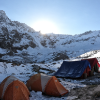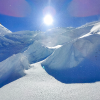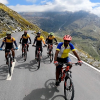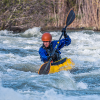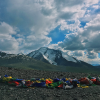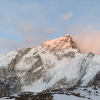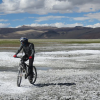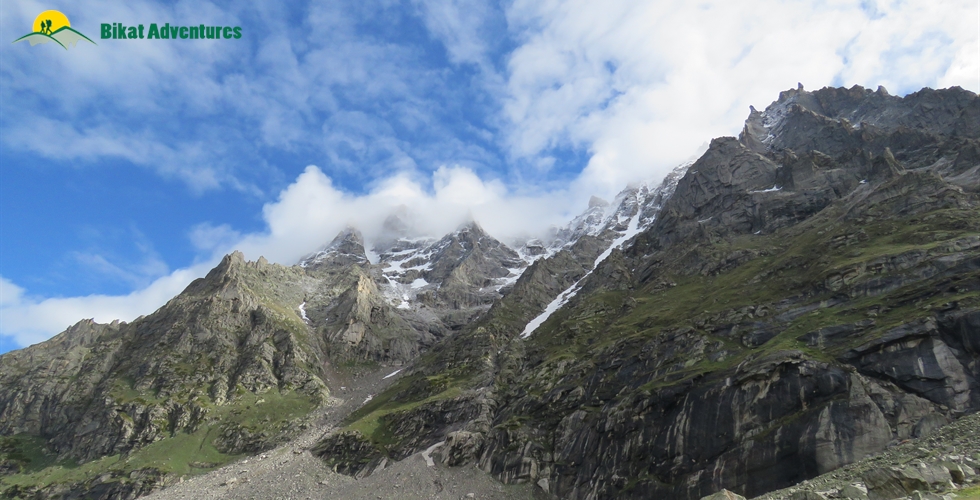
Jagatsukh Peak Trek
A Perfect Starting Point to Transition from Trekking to Climbing
Available Batches
Brief Description
Gallery
Brief Itinerary
Detailed Itinerary
Day 1: Make your way to Manali (2,050 M)
The trek starts from Manali, which is a very popular tourist destination and hence extremely accessible. If you need guidance on how to get to this high-altitude backpacking center, this article (How to Reach Manali: All You Need to Know) might come handy.
Day one is reserved for the participants to make their way into Manali and get settled into their accommodation in a Manali hotel. First half of the day is to get comfortable with the mountain air and each other. While the body acclimatizes, we take this time to get together with the group and delve into the happenings of the next few days - schedule, what to expect, basic do's and don'ts in the mountains, how to maintain the sanctity of the environment and such matters of importance. Since we are a learning-based organisation, we take some time on the first day to talk a little about how best to pack your backpacks in order for a successful climb. This is accompanied by a demo of the same which then follows getting all the equipment required, in place. It is a relatively easy day but very very essential for what's to come next!
Day 2: Manali (2,050M) to Jagatsukh (1,950M) to Chikka (3,175M)
Duration: 1 hour drive + 3 hour trek
Post breakfast we will drive to Jagatsukh which is our trail head for the climb. We should get to this village close to Manali within an hour from when we begin. We start our trek towards the meadows of Chikka from here, which should take close to 3 hours. It is not a heavy day and is perfect to get acclimatized to this new height that you arrived to just a day before. The trail is very pleasant and refreshing too. It ascends gradually through thick pine forests along narrow valley. The campsite is on the open pastoral land of Chikka, next to the noisy Jagatsukh Nala.
Day 3: Chikka (3,175M) to Seri Base Camp (3,700M)
Duration: 5 hour trek
We leave after an early breakfast today, latest by 9 AM. We continue alongside the Jagatsukh Nala. The day’s trek starts with a gradual ascent under the canopy of a thick forested land for the first one hour. After an hour, the forests start to thin out to give way to Birch trees and finally some bushes and high altitude grasslands. You will be welcomed into the grasslands carpeted with the brightest wildflowers you will see! With a few patches of old snow and a few patches of boulders, the ascent up from 3,175M to 3,700M is gradual. The trail gets tougher and the views get better. Walking alongside the Nala, we pass a freshwater spring at Panduropa and Dudu Patthar until we reach the expansive grasslands at Seri with the Tainta cliffs towering to the left and the waterfalls crashing on the rocks below. We cross the zigzagging river to get to our campsite for the day. We camp on the flatlands for the night with a massive waterfall right opposite the campsite. This beautiful campsite doubles up as our base camp for this expedition.
We go for an acclimatization walk in the early evening.
Day 4 and Day 5: Seri Base Camp (3,700M) to Summit Camp
Duration: 6 hours
Expeditions usually employ the method of making rotational rounds for better acclimatization. This means that we climb to the next campsite and come back down to spend the night. The next day we go up again, this time to occupy the next campsite, thereby living the golden tenet in climbing - ‘climb high, sleep low’. We undertake load ferry from Base Camp to Summit camp on Day 4 to finally go and occupy Summit Camp on Day 5.
Day 6: Summit Attempt (5,050M)
Like all expeditions, we start our summit attempt in the dark of the night when the snow is most stable. The summit attempt involves a fair bit of altitude gain. Expect the day to be 8-9 hours long which involves starting from the summit camp to get to the top of the mountain and trace your way back to the base camp. The climb involves navigating moraine fields which eventually gives way to glaciers. The climb and the summit provide for some magnificent views of the peaks around. We will spend tonight at base camp before we head back down to Manali.
Day 7: Basecamp (3,700M) to Manali (2,050M)
On day 7, we head back down from our base camp at Seri to trek to Chikka and drive back to Manali. Expect to reach by early evening. We would recommend you account for a buffer day or two to book your travel back since the weather in Himalayas tends to be unpredictable.
Day 8: Reserve Day
In case of bad weather or other difficulties, Day 8 is reserved for a second summit attempt. This will only get used if unexpected and unforeseeable conditions present themselves at the last minute preventing the first summit push.
What's Included
- Food as per menu on the trek
- Forest Permits/Camping Charges,if any (Upto the amount charged for Indian nationals)
- Tents on twin sharing basis, Sleeping bags, mats
- Safety Equipment includes static rescue rope, seat harness, carabiners, pulleys & other items used for climbing.
- First Aid certified Expedition guide, cook, helpers, and porters for carrying common supplies
- Mountaineering course certified Trek Leader with First Aid certification and special rescue course from NIM, Uttarkashi
- Hotel/Guest House stay in Manali on Day 1. Rooms will be on Twin/Triple Sharing Basis. In case, reserve day is used, the trek will end in Manali.
What's Not Included
- Portage of personal bags during the trek
- Cost of any kind of Travel Insurance.
- Any Expense of personal nature.
- Any Expense not specified in the inclusions list.
- In case reserve day for summit attempt is utilized, an additional amount of INR 2500 would be charged.
- Permits for foreign national.
Are you Eligible for this Adventure?
BRS Level Required
This makes it mandatory for you to have high-altitude experience of preferably multiple treks marked at level 5 on the BRS. The altitude, the terrain and the nature of the climb demand a certain level of skill and a need for you to be aware of how your body reacts to the various features of high altitude environment.
If you do not know what level of BRS trek would suit you best, worry not! Fill out this Form:
we will send you a progression chart to help you comfortably get out of your comfort zone in order to level up and ultimately reach your highest potential in the big, bad world of outdoor adventure.
Packing List
This is a list of essential items for individuals doing the trek with Bikat Adventures. This list contains only those items which the participants are required to bring with them. The list excludes those items which are provided by Bikat Adventures on the trek. We have divided the items into five categories. All the items in the list are essential except for those marked as optional.
Trekking Gear
- Ruck sack bag with rain cover. Qty -1
- Day Pack Bag - Recommended for treks with summit day
- Head Torch with spare Batteries. Qty -1
- U V protection sunglasses. Qty -1 Here is how you can choose the best sunglasses for trekking.
- Water Bottles: 2 bottles of 1 liter each
Footwear
- Non-skid, deep treaded, high-ankle trekking shoes Qty -1
- Pair of light weight Slipper/Sandals Qty -1
Clothing
- Quick Dry Warm lower or Track Pants. Qty - 2
- Full sleeves T-shirts/ Sweatshirts. 1 for every 2 days of trekking
- Pair of thick woolen socks. 1 pair for every two days of trekking
- Thermal Body warmer Upper & Lower. Qty-1
- Undergarments. Qty - 1 for every day of trekking
- Warm jacket closed at wrist & neck .Qty-1
- Full sleeves sweater. Qty -1
- Rain wear ( Jacket & Pants ) . Qty-1
- Pair of waterproof, warm gloves. Qty-1
- Woolen cap. Qty-1
- Sun shielding Hat. Qty -1
Toiletries
- Personal toiletries kit (Small Towel, Toilet paper, paper soap, Bar soap, toothbrush, toothpaste, cold cream, etc.)
- Sun screen lotion small pack. Qty -1 Here is your Sun Protection 101 to stay safe in the bright sunny outdoors.
- Lip Balm small pack. Qty-1
Utensils
- Small size, Light weight & Leak proof lunch box. Qty-1
- Plate. Qty- 1
- Spoon.Qty-1
- Tea/Coffee (plastic) Mug.Qty-1
Miscellaneous
- Camera (Optional)
- Carry your medicines in plenty in case you have any specific ailment. Consult your doctor before joining the trek.
- Dry fruits, Nuts, Chocolate bars (Optional)
Frequently Asked Questions
Why Bikat?
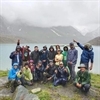

Small Group Size
Our batch sizes are capped at 15 for smaller treks with the trek leader and trekker ratio of 1:8. This ratio, in our years of experience, has proven to deliver the best trekking experience for individuals as well as groups. Capping the size of the group ensures individual attention to each trekker so that no signs of distress or need during the trek go unnoticed. It also helps to form a more cohesive cohort with better group energy which helps define the rhythm and pace of days on the trek. As you go higher up on the BRS scale, since the stakes are higher, expeditions have an even smaller group size with the ratio of expedition leader to climber set at 1:2.
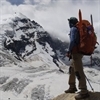

Qualified Trek Leaders
We follow a rigorous regime of hiring and training our experts in the field. Each trek leader is a certified mountaineer with years of experience in the field. In addition to their qualification, they also go through practical and situational training to tackle any and all kinds of sudden conditions that may present themselves on the ground. Being unpredictable is the core nature of the mountains but being ready for any circumstance as best as possible is a controllable asset that we try to nurture. Our field experts are also trained in basic medicine and first-aid response. Watch: Forerunners - The Making of A Trek Leader At Bikat Adventures
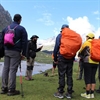

Guided Progression
Since Bikat Adventures is a learning-based organization, we help you climb up the ladder of difficulty within the sphere of outdoor adventure systematically. Our on-ground training modules are designed to handhold you through the upskilling process so that you are ready to take on bigger challenges.
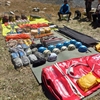

Equipment Quality and Check
All the gear used on our treks and expeditions is tried and tested, maintained for good quality, and is overall top-notch in quality and condition. We are continually looking to obtain the best of everything there is in the market so as to ensure optimum safety.
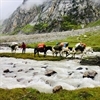

Support Systems
Along with the staff you see on-ground, we have a team of superheroes working in the background to give you the best experience possible. Our background team also comprises local staff from each area who know the region best. Having local support helps with studying the area, pre-planning, execution, and in receiving timely support in case of emergencies in these remote locations.
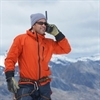

Communication
Our on-field staff is in constant contact with our teams based in primary locations so as to eliminate any avoidable delay in reaching additional help and support when required. We try to use the best tools for communication available, including satellite phones, in regions where they are not restricted.
What our customers Say
Cancellation Policy
Cash refund
Cancellations up to 60 days prior to departure date
Between 60 days upto 30 days prior to departure date
Between 30 days upto 10 days prior to departure date
Less than 10 days prior to departure date
Voucher refund
Cancellations up to 30 days prior to departure date
Between 30 days upto 15 days prior to departure date
Between 15 days upto 10 days prior to departure date
Less 10 days prior to departure date
- Cash refund is applicable only in case of bookings made without using any promotional offer code or Cancellation Vouchers or Discounts
- This is only a brief of cancellation terms. For finer details please refer Detailed Cancellation Policy.
Blog Posts
Similar Adventures
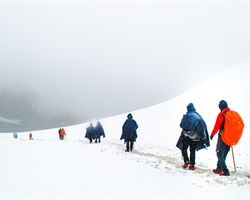
Pin Parvati Pass Expedition
The Wildest Cross-Over Trek of India
Himachal
12 Days
BRS 6
5298 m
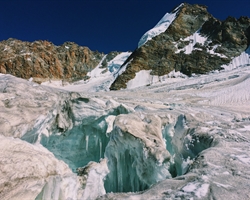
Kang La Trek
A Challenging Crossover Trek between Himachal and Jammu
Himachal
12 Days
BRS 6
5465 m
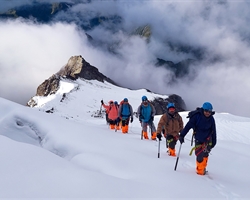
Friendship Peak Trek
A Springboard For Hardcore Mountaineering
Himachal
8 Days
BRS 6
5289 m





